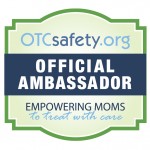 My daughter recently had a nasty fall. One of those falls that takes your breath away, leaves you frozen in terror, and brings forth an incomprehensible scream.
My daughter recently had a nasty fall. One of those falls that takes your breath away, leaves you frozen in terror, and brings forth an incomprehensible scream.
And there’s nothing you can do. You’re too far away. It’s both slow motion and in the blink of an eye. I didn’t want to know what I would find once I got to her. It looked so terrible, I imagined CT scans, x-rays, and casts in our immediate future.
Thankfully, she walked away with two scraped and bruised elbows. There was no blood, no deformed extremities, and no head trauma. We were so incredibly lucky and aside from the PTSD I still have from that image that invades my sleep; a Barbie Band-Aid on each elbow is all that remains.
We were at a play-date. Enjoying a sunny Saturday afternoon in the backyard of friends. And once the shock and emotional trauma subsided, us moms got to talking. They were thankful I was there. How nice it must be to know what to do and when to seek medical attention.
One mom confided that she brings her kids in for everything because it’s hard to know whether it’s serious or not. I admitted that when it came to my own children, I’m not the most objective. So there’s that.
But, yes, on that Saturday afternoon I was thankful that I could skillfully assess my daughter and realize that one, nothing was broken and two, there was no significant head trauma. Aside from any obvious bleeding or deep cuts, those are the two scenarios that would warrant immediate medical attention.
So, how would you know if your child needed to be evaluated for a broken bone?
In my daughter’s case, I was initially worried about her elbows. They took the brunt of her fall and she fell from a few feet. But once I cleaned her up, there was no significant pain on her bony prominences, no swelling, and she could move her arms freely. The abrasions on each side were superficial.
When a child suffers a fracture (and the elbows, forearms, and wrists are the most commonly fractured bones in children) there is typically significant pain, a refusal to move that part of the body, swelling, possible deformity, and potentially some numbness and/or tingling.
As for falls resulting in trauma to the head, parents are often unsure about what constitutes the need for medical evaluation. Before I move on to red flags and head trauma, it’s important to always keep this in mind: when in doubt, check it out.
More specifically, whenever a child falls and that fall involves a blow to the head; consider these red flags as definite reasons to seek immediate medical attention:
- The fall was from a significant height.
- Your child’s pupils are unequal when you look at them and/or shine a light on them.
- Your child had loss of consciousness. In that case, you’ll be calling 911.
- There is significant swelling and/or deformation of the area that was injured.
- Your child vomited more than once after the fall.
- Your child has a persistent and/or worsening headache after the fall.
- Your child is less than 2 years old and things just “don’t seem right.”
These are just a few of the signs that your child has a suffered a significant brain injury requiring further evaluation. Thankfully, most childhood head traumas are mild and resolve without any sequelae.
Childhood is filled with near misses, scrapes, and falls. It’s enough to make any parent want to surround them in bubble wrap. But we don’t. We bravely soldier on, trusting ourselves and our children.
In those moments after my daughter’s fall, a flood of relief overcame me after she sat on my lap for a while. It wasn’t my physical assessment of her that provided that relief; but rather looking at her, holding her, talking to her…I just knew she was okay.
And when it comes to the bumps and broken bones of childhood, sometimes the best medical compass we have at our disposal is just that…our instinct.
More information about kids and head trauma:
Head injury on Healthy Children (for parents) Minor head trauma in infants and children (for clinicians) on Up To Date Concussions in children **This is a post I wrote which initially appeared in The Sacramento Bee on November 8, 2012** Pin It







